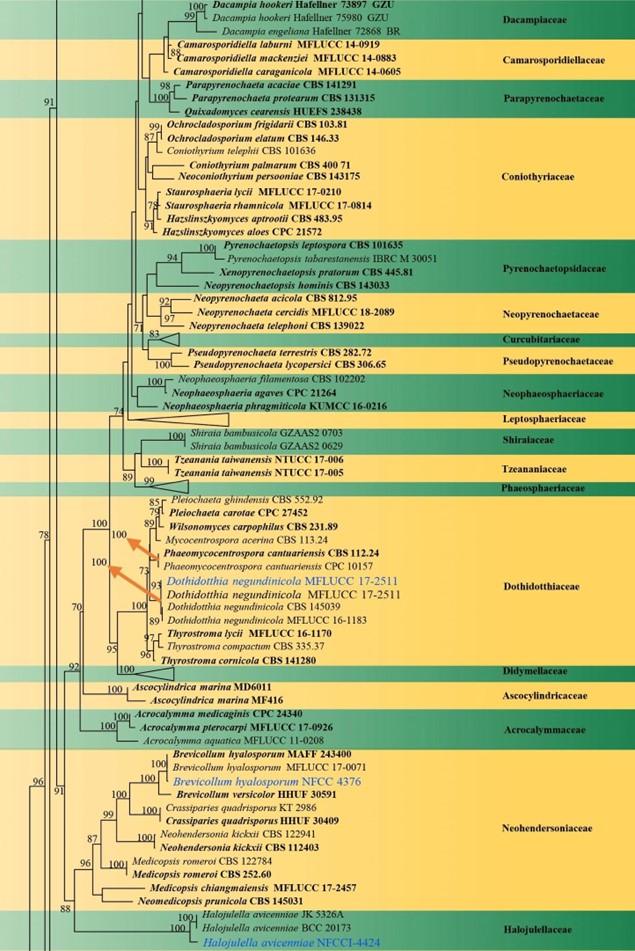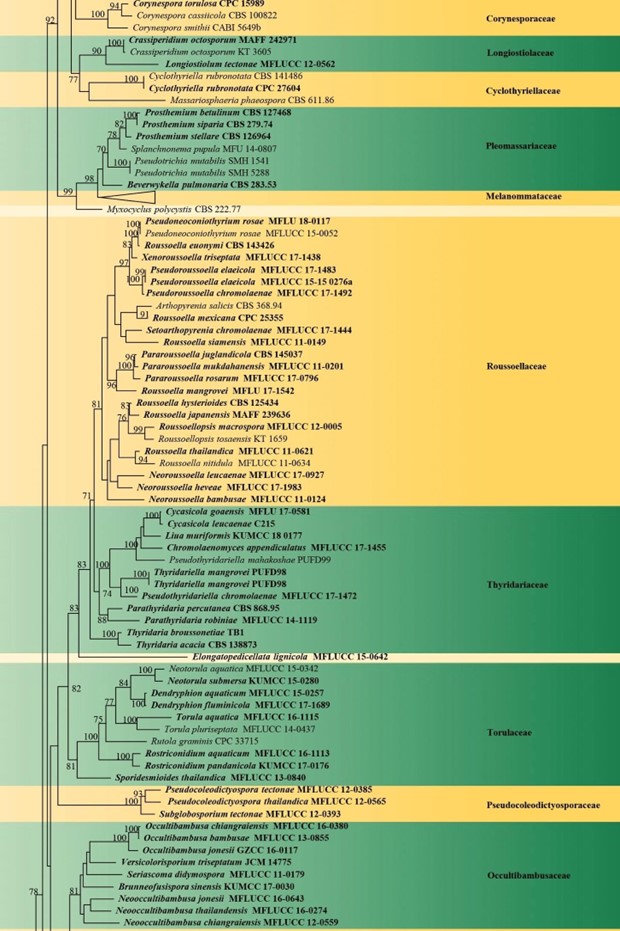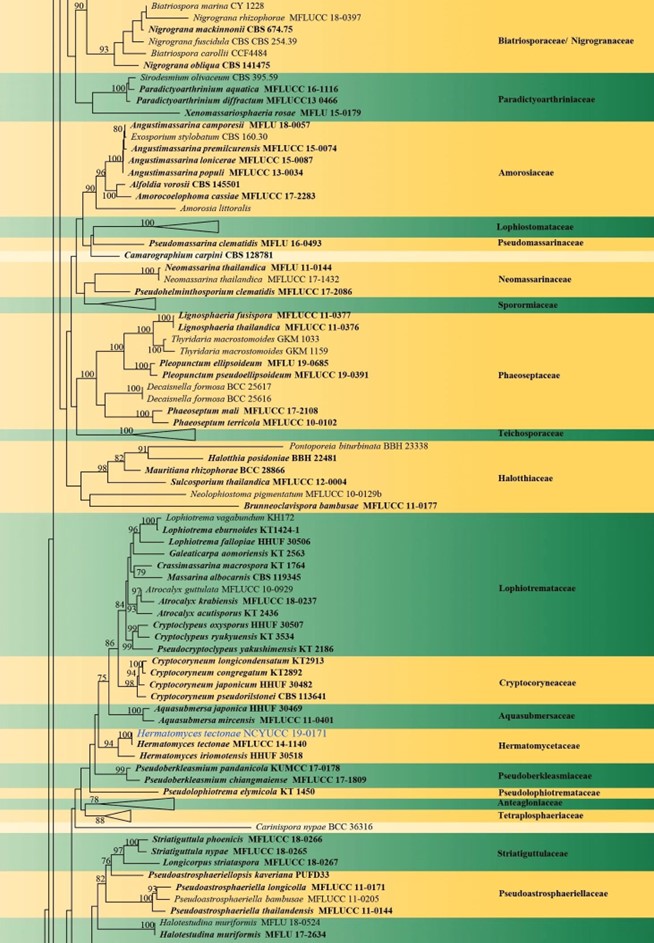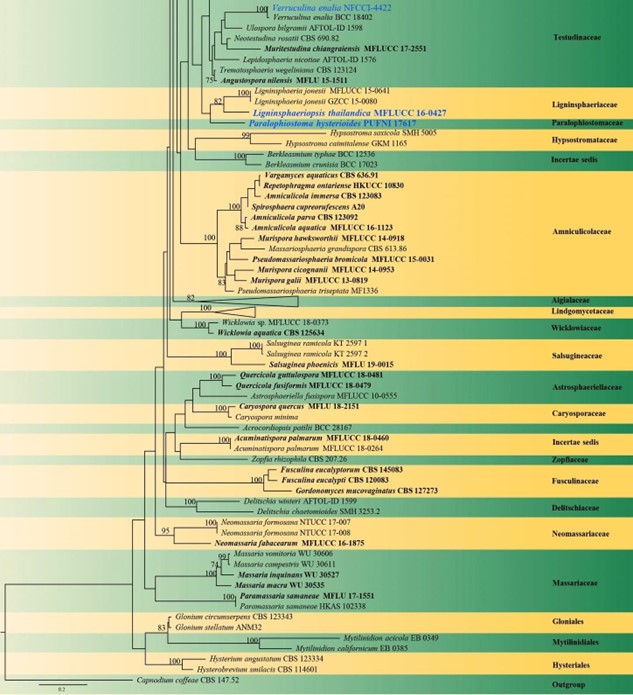Elongatopedicellata Jin F. Zhang, Jian K. Liu, K.D. Hyde & Zi Y. Liu, Fungal Divers. 75: 118 (2015).
MycoBank number: MB 551484; Index Fungorum number: IF 551484; Facesoffungi number: FoF 00959; 1 morphological species (Species Fungorum 2020), 1 species with molecular data.
Type species – Elongatopedicellata lignicola Jin F. Zhang, Jian K. Liu, K.D. Hyde & Zi Y. Liu, in Ariyawansa et al., Fungal Divers. 75: 118 (2015).
Notes – A monotypic genus Elongatopedicellata was introduced by Ariyawansa et al. (2015a) to accommodate an ascomycetous taxon having immersed to erumpent, subglobose to obpyriform, coriaceous ascomata, with long ostiolar neck, bitunicate, clavate asci, with a long pedicellate and hyaline, fusiform, 1-septate ascospores, surrounded by a distinct mucilaginous sheath (Ariyawansa et al. 2015a). Asexual morph of this genus is undetermined. The genus was found as a saprobe on dead branch in northern Thailand. Only two sequence data are available in GenBank (KX421368, KX421369) for this genus. Phylogenetically, Phookamsak et al. (2019) used ITS, LSU, and tef1 in their analyses of taxa in Roussoellaceae and showed that this genus formed at the basal of Roussoellaceae as in (Ariyawansa et al. 2015a). However, we included SSU of Elongatopedicellata in our analyses (Fig. 42) and found that this genus is unstable. However, we retain this genus in Roussoellaceae but note that more collection, analyses of sequence data, and more gene regions are needed to clarify its placement.

Figure 42 – Phylogram generated from maximum likelihood analysis (RAxML) of Pleosporales based on ITS, LSU, rpb-2, SSU and tef1 sequence data. Maximum likelihood bootstrap values equal or above 70 % are given at the nodes. An original isolate number is noted after the species name. The tree is rooted to Capnodium coffeae (CBS 147.52). The ex-type strains are indicated in bold.

Figure 42 – Continued.

Figure 42 – Continued.

Figure 42 – Continued.

Figure 42 – Continued.

Figure 42 – Continued.
Species
